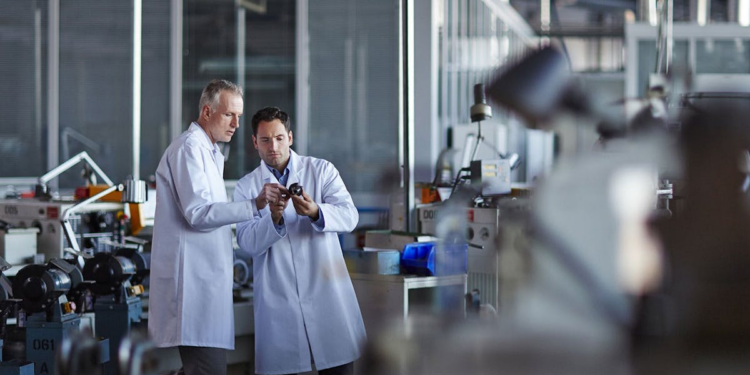Table of Contents
What are nanopositioning systems and how do they enhance precision in medical and laboratory applications?
Unveiling the Latest Innovations in Motion Control Technology for Medical and Laboratory Use
Introduction
In recent years, the field of motion control technology has seen significant advancements, particularly in the realm of medical and laboratory applications. These innovations have revolutionized the way medical devices and laboratory equipment operate, offering greater precision, efficiency, and control. In this article, we will explore the latest developments in motion control technology and their impact on the medical and laboratory sectors.
Benefits and Practical Tips
Precision and Accuracy
One of the key benefits of the latest motion control technology in medical and laboratory use is the enhanced precision and accuracy it provides. With advanced control algorithms and high-resolution feedback systems, motion control solutions allow for precise positioning and movement control, critical in medical procedures and laboratory testing.
Improved Safety and Reliability
Another advantage of the latest motion control technology is the improved safety and reliability it offers in medical and laboratory settings. With features such as fault detection and error correction, these systems can significantly reduce the risk of equipment malfunctions and ensure consistent, reliable performance.
Enhanced Efficiency and Productivity
The new developments in motion control technology have also led to increased efficiency and productivity in medical and laboratory operations. With faster response times, optimized motion profiles, and seamless integration with other systems, motion control solutions can streamline processes and improve overall workflow.
Latest Innovations in Motion Control Technology
High-Performance Servo Drives
One of the most significant advancements in motion control technology for medical and laboratory use is the development of high-performance servo drives. These drives offer advanced control capabilities, precise torque and speed regulation, and seamless connectivity with various motor types, making them ideal for a wide range of motion control applications.
Nanopositioning Systems
Nanopositioning systems have also emerged as a powerful innovation in motion control technology for medical and laboratory use. These systems provide sub-nanometer precision and nanosecond response times, enabling ultra-precise manipulation of samples and instruments in nanotechnology, biotechnology, and medical imaging applications.
Integrated Motion Control Platforms
Integrated motion control platforms have become increasingly popular in medical and laboratory settings, offering a comprehensive solution for motion control, machine vision, and automation. These platforms combine advanced control algorithms, intuitive programming interfaces, and seamless communication protocols, simplifying the implementation of complex motion control applications.
Case Studies
Robotic Surgery Systems
One compelling example of the latest motion control technology in medical use is the development of robotic surgery systems. These systems leverage advanced motion control solutions to enable precise, dexterous robotic manipulation during minimally invasive surgical procedures, enhancing surgical precision and patient outcomes.
Laboratory Automation Equipment
In laboratory settings, the latest motion control technology has been instrumental in the development of advanced automation equipment for sample handling, testing, and analysis. These systems utilize high-speed, high-precision motion control to improve throughput, accuracy, and repeatability, driving advancements in research and diagnostics.
Conclusion
The latest innovations in motion control technology have undoubtedly transformed the landscape of medical and laboratory applications, offering unprecedented precision, safety, and efficiency. As technology continues to evolve, we can expect further advancements in motion control solutions, driving continued improvements in medical care, scientific research, and laboratory operations. Whether it be high-performance servo drives, nanopositioning systems, or integrated motion control platforms, these innovations hold the potential to revolutionize the way we approach motion control in medical and laboratory settings.
Trends in Motion Control Technology for Medical and Laboratory Equipment
Motion control technology is constantly evolving and revolutionizing the way medical and laboratory equipment operates. In this article, we will explore four significant trends in motion control technology that are shaping the future of applications in medical and laboratory settings.
Enhanced Precision and Accuracy
One of the most notable trends in motion control technology is the focus on enhanced precision and accuracy. As technology continues to advance, there is a growing demand for medical and laboratory equipment to perform intricate and highly precise tasks. For example, in surgical procedures, automated devices need to be able to make precise movements and adjustments in order to ensure the safety and success of the operation. Similarly, in patient treatment and imaging, the need for precision is paramount in delivering effective and accurate results.
Integration of Artificial Intelligence
Another trend in motion control technology is the integration of artificial intelligence (AI) to enhance the performance of medical and laboratory equipment. AI algorithms are being used to optimize motion control systems, allowing for real-time adjustments and improvements in equipment operation. This integration of AI not only improves the overall efficiency of equipment but also opens up new possibilities for advanced diagnostics and treatments.
Miniaturization of Components
In recent years, there has been a noticeable trend towards the miniaturization of motion control components. This trend is driven by the need for smaller, more compact equipment in medical and laboratory settings. For example, blood analyzers, DNA sequencers, and other analytical machines require precise and efficient motion control systems that can be seamlessly integrated into their compact designs. The miniaturization of components is also essential in enabling portability and flexibility in the use of these devices.
Enhanced Connectivity and Communication
Lastly, there is a growing trend towards enhanced connectivity and communication in motion control technology for medical and laboratory equipment. The ability for different devices to communicate and synchronize their movements is crucial in ensuring seamless operation and coordination in a healthcare or laboratory environment. This trend is driven by the increasing demand for interconnected systems that can work together to deliver efficient and reliable results.
These trends in motion control technology are revolutionizing the way medical and laboratory equipment operates, and their impact is expected to continue to grow in the coming years. As technology continues to advance, we can expect to see even more innovative developments in motion control technology that will further enhance the performance and capabilities of medical and laboratory equipment.





